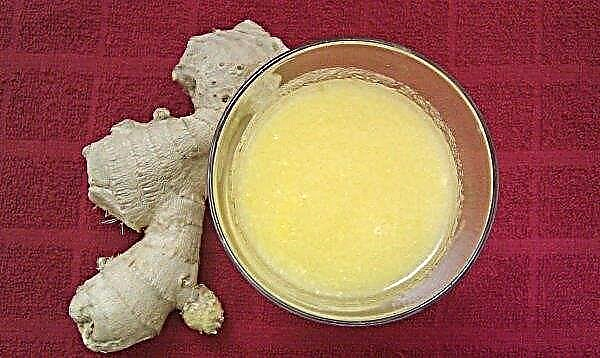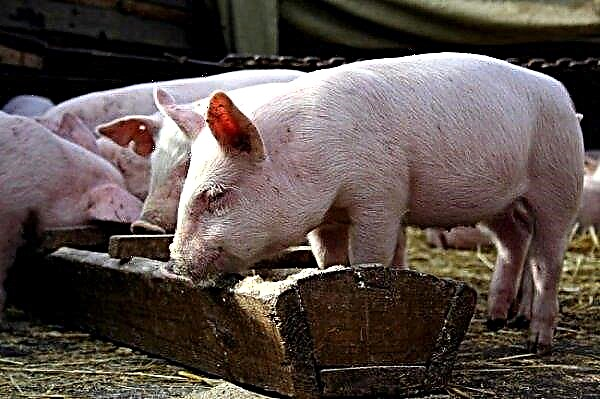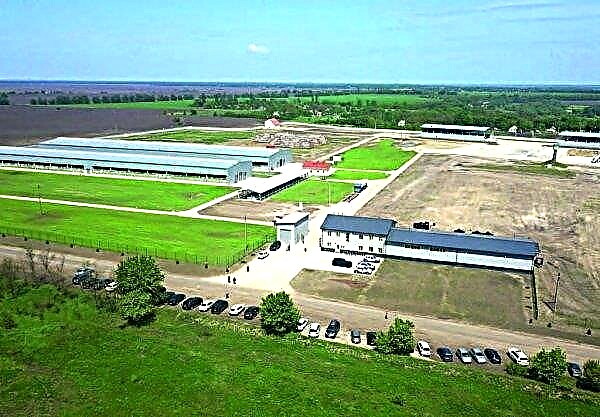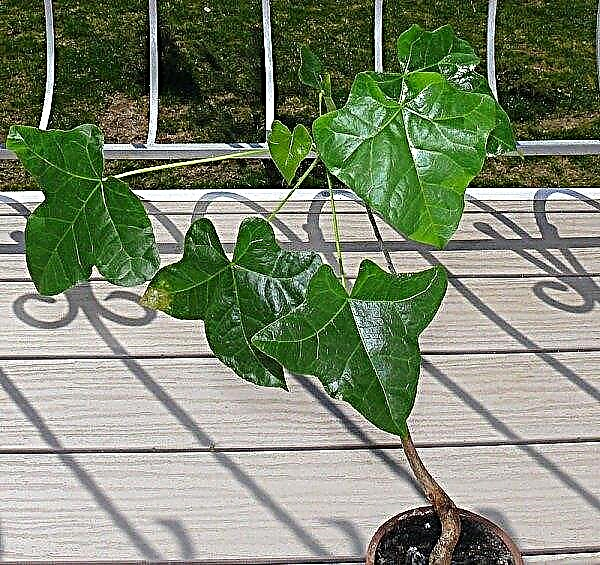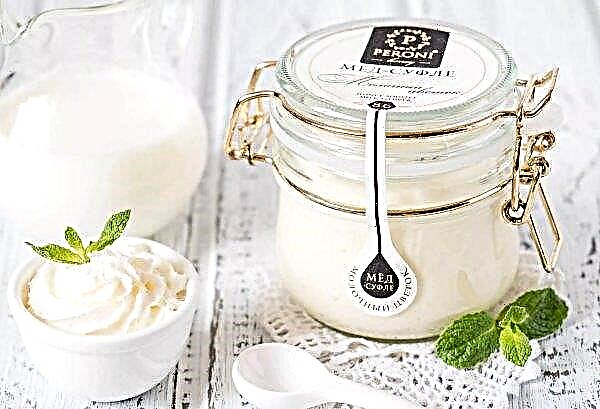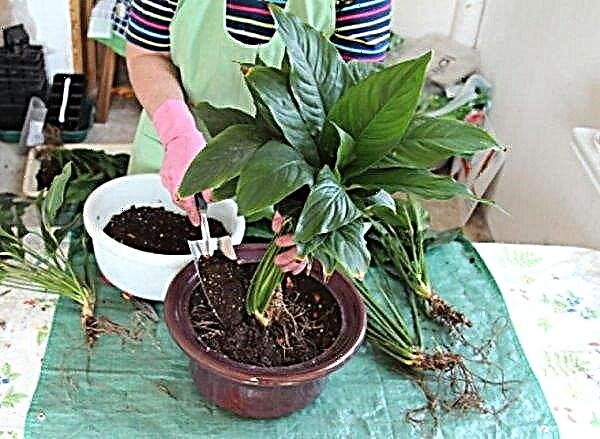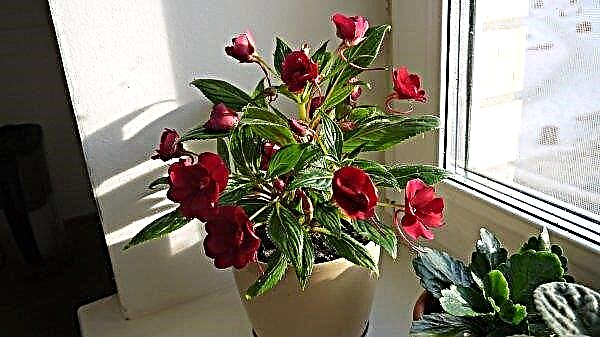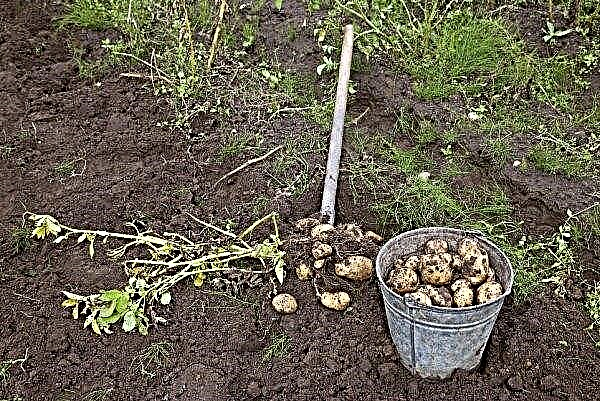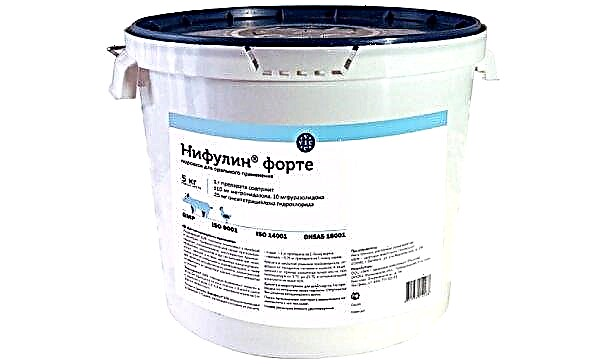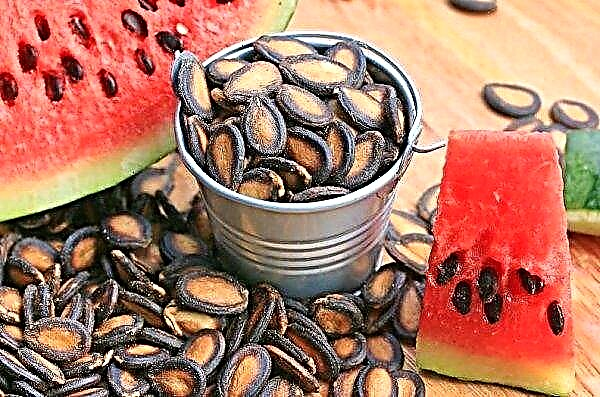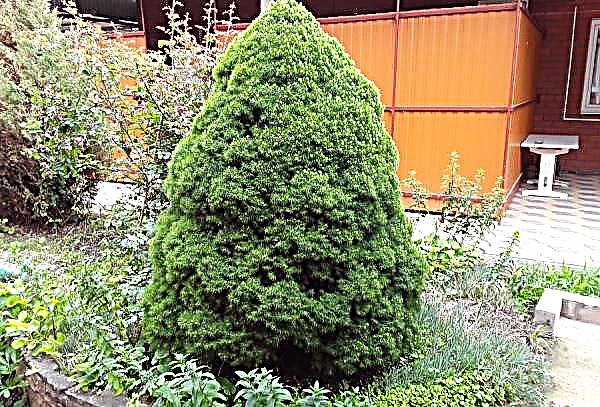African millet may not be the most popular type of grain in the modern world, but it continues to be grown around the globe, both as pet food and for human consumption. In addition to good taste, nutritional and health-improving properties, the culture also has a high decorative effect. In European countries, the most beautiful varieties are grown in parks and flower beds.
What is African millet
This is a cereal crop that can grow in conditions of water scarcity, which makes it an ideal object for cultivation in difficult climatic conditions. Now, African millet is grown mainly in India, where its production is more than 8 million tons per year.
Pennisetum crops are very often found in many large African countries and in China. A wonderful plant is a very good source of nutrients, vitamins, minerals and organic compounds, which can significantly improve human health. The grain does not contain gluten, so patients with celiac disease (gluten intolerance) can replace them with wheat. Culture gives the body a large amount of energy, as well as valuable fatty acids and B vitamins.
Did you know? The well-known yellow millet is nothing but millet grains peeled from hard red husks.
History of the plant
Historians claim that Africa is the birthplace of culture, but about 10,000 years of grain has spread throughout Asia and the Middle East. There are several dozen varieties of maternal culture. These changes occurred gradually, not in one hundred years, under the influence of changing climatic conditions and natural mutations. In Russia, millet porridge was traditionally cooked from pearl millet, and threshed plant stems were also used to make strong brooms.
Botanical Description
African (pearl) millet or Pennisetum glaucum belongs to the cereal family. This is a grassy annual of the genus Cirrus. Most varieties do not tolerate subzero temperatures. Self propagating in the tropics. Pollination of flowers occurs with the help of wind and insects.
Did you know? In Ayurveda, millet is the basis of a strict cleansing diet, after which the human body gets rid of toxins and excess fat.
Characteristics
Pennisetum is a tall annual cereal. The maximum height of the bush from the ground to the tip of the spikelet is about 400 cm. It has well-developed long roots, the smallest part of which remains under the soil surface at a depth of 10-15 cm, and the larger one goes deep into the ground by about 3.5 m. It has thick, strong stems, therefore it is resistant to damage by wind or rain. The leaves are oblong, wide, in the shape of a sword, painted in dark green, rarely located, covered with short hairs.
In the middle of the sheet plate, a characteristic bright band passes. Small flowers are grouped in the form of vertical panicles (20–22 cm long). There are several branches on the plant, each of which forms 8–9 burgundy ears, covered with short, soft to the touch, white bristles.Cirrus bristles bloom from July to September inclusive. By the end of the first month of autumn, seeds whose kernels are contained in a hard shell ripen in panicles. In one inflorescence, there are several thousand grains painted in white, yellow, red or black.
Types and varieties of African millet
There are quite a few varieties of pennisetum. The plant is cultivated not only in agriculture, but also grown in flower beds in gardens and parks. With its help, landscape designers create interesting compositions, advantageously shading flowers and trees with lush bushes and decorative ears of grassy grass. African millet is almost impossible to meet in the wild of Russia. But sometimes there is self-sowing of some varieties grown by man in the previous year.
Varieties:
- Pennisetum foxtail - perennial cereal, whose homeland is southeast Asia and Australia. Without prejudice to the root system, it can winter in the central regions of Russia. There are tall or undersized varieties of foxtail (40 to 100 cm). The plants are characterized by the growth of a wide, lush bush with long but narrow green leaves that change color to yellow in autumn. Flowering of tall varieties occurs in late summer and lasts from August to September, undersized come into this period much earlier, in July. Inflorescences look like thin fluffy panicles, painted in all kinds of shades from white to burgundy.
- Pennisetum East - a perennial herb brought to Europe from Africa. In the natural environment grows on rocky slopes, prefers a tropical and subtropical climate. It forms a lush vertical bush with thin and tall green leaves of green color. Its height, depending on the variety, can be from 15 to 80 cm. The ears are also narrow, framed by thick pink-brown bristles, from 4 to 15 cm long. In Russia, it is grown as an annual, as it does not tolerate severe frosts.
- Pennisetum simple - The Chinese variety, the most resistant to low temperatures. The natural environment of growth is at the foot of the mountains. Usually plants form small groups. The bushes are tall, often reaching 120 cm. The branches are covered with gray-green or olive foliage. Flowering occurs near the end of June and lasts until September. Young panicles are the same color as the leaves, but as they mature, they turn yellow-brown. The root system is very deep and extensive, so often this kind of pennisetum drowns out neighbors growing nearby.
- Pennisetum gray - This cereal is distinguished by a beautiful bronze color of wide leaves. Their width is about 3.5 cm, and their length is from 50 to 80 cm. It belongs to the tall representatives of the family and grows up to 2 m. Its grains are used as food for people and as feed for livestock. In European countries, the plant is cultivated as a decorative annual culture.

The most decorative varieties of pennisetum bluish:
- African Parple - all aerial parts of the plant (panicles, leaves, stems) have a burgundy-bronze color;
- Jester - late flowering bush, growing to 120 cm;
- Parple Baron - purple leaves and stems, the height of a lush bush reaches a meter;
- Parple Majesty - a tall bush (140–160 cm), has beautiful red leaves and maroon panicles;
- Jade Princess - a beautiful annual, reaching 90-120 cm, its feature is in the sharp contrast of bright green foliage and purple vertical ears.

Application
In human culture, cirrus bristles are used in various fields. Its main purpose is to grow as food cereal. For culinary purposes, grains devoid of husks are used (after threshing).
In addition to eating, this unique plant often performs decorative functions. The most beautiful varieties of culture were chosen by landscape designers. They are planted as beautiful annuals to decorate home gardens, gardens and parks.In landscape design
Gardeners have long been successful in using African millet in decorative planting. For a greater effect, the characteristic features of a particular variety must be taken into account. Low varieties of Cirrus bristles are planted on the curbs of garden paths or used as a frame for large flower beds. From tall varieties create annual hedges, as well as living windproof walls for more delicate plants.
The most popular are all varieties of penisetum bluish. Its panicles and leaves are very decorative due to the bright color, and sometimes the contrast between the color of the leaves and horizontal inflorescences.
In cooking
African millet belongs to cereals, so its grains are suitable for cooking many dishes. Porridge, casseroles, first courses, pancakes and cakes are made from it. In some countries, this product is the basis for the manufacture of flour, the production of beer and alcohol. It is believed that millet cereals boiled in milk become much tastier and acquire a higher nutritional value.
Important! Mistresses are not recommended to store millet groats for a long time, as it quickly acquires a rancid taste. An unpleasant property is due to the fact that the cereal contains a large amount of fat, prone to rapid destruction.
Chemical composition
According to scientists, the chemical composition of millet grain largely depends on the characteristics of the variety and growing conditions. Therefore, the exact nutritional value of cereals cannot be determined without laboratory analysis. But it is known that in terms of protein and fat content it surpasses even such popular crops as barley and buckwheat.
The energy value of millet is very similar to rice and buckwheat, but has certain advantages in nutritional properties. Its protein is more valuable due to its good amino acid composition and is equal to wheat proteins, as well as beans, corn and peanuts. The composition of the nuclei includes a large amount of leucine and methionine. Millet grains contain less fat than oat grains.
One cup of boiled millet contains (approximately):
- calories - 286;
- carbohydrates - 57 g;
- total fat - 2.4 g;
- saturated fat - 0.4 g;
- sodium - 5 g;
- monounsaturated fatty acids - 0.4 g;
- thiamine - 0.3 g;
- polyunsaturated fat - 1.2 g;
- niacin - 3.2 g;
- fiber - 3.1 g;
- magnesium - 106 mg;
- protein - 8 g;
- zinc - 2.2 mg.
Useful properties and effects on the body
Throughout the world, especially in developing countries, millet is grown as a food cereal. Its grains are of exceptional value thanks to nutrients, including starch, high levels of vitamin B, as well as calcium, iron, potassium, zinc and magnesium. This is an inexhaustible source of fats, protein and dietary fiber necessary for the human body.
For human health, millet is important in that it can support: the normal functioning of the heart and pancreas, improve the digestive system and the functioning of skeletal muscles, reduce the risk of cancer, stimulate the respiratory system, effectively cleanse the body of toxins and optimize the functioning of the immune system.
Did you know? Cirrus bristles are great for creating winter plant compositions. For this, the most lush fresh stems are cut, and dried in the shade for two to three weeks.
How to grow a plant in open ground
Cirrus bristles can be grown from seeds sown directly in the garden. For such work, it is recommended to choose a period when the threat of frost return is over (second half of May). To get the most developed plant and, at the same time, avoid damage to seedlings by returning spring cold, you can grow seedlings. Most often, pots or boxes are used for sowing seeds.
After emergence, they are installed closer to the source of natural light, for example, on the windowsill of the south window. They take care of the pennisetum seedlings in the same way as ordinary seedlings: they loosen the soil, water it, and, if necessary, transplant it into a large container. When the young pinnate bristles grow 3-5 real leaves, it is time to plant the seedlings in open ground.
Site selection and soil preparation
Before starting work, you need to choose a site well lit by the sun. The soil should be loose, drained, without stagnation of moisture and waterlogging, as the culture is prone to decay of the root system. The soil is cleaned of last year's weeds, after which organic fertilizers are scattered on the surface with an even layer of 5-10 cm. Dig up the earth, break up clods with a rake, and then level the surface of the beds.
Seed preparation
Millet does not require special preparation before sowing, but you can get sprouts faster. To do this, it is recommended to soak the grains in warm water. Seeds are placed in a saucer and filled with liquid so that they are covered with moisture no more than 2-3 mm, and left in this position for 8-10 hours. A deeper location can affect the germination of cereals, as planting material suffocates without oxygen.
Sowing technology
Sowing of Cirrus bristles is not much different from growing other annual herbaceous crops. To get a successful result, the gardener is recommended to take care of the fertility of the soil. It is also important to water young seedlings in a timely manner and to prevent critical drying of the soil.
Sowing African millet:
- The furrow for planting should be shallow, not deeper than 5 cm.
- Seeds are sown evenly, not densely scattering them along the planting furrow.
- Approximately 2-3 cm of soil is covered with seed furrow, after which the surface of the bed is rammed. Compaction will help keep moisture in the soil longer. You can cover the crops with white spanbond or agrofibre.
- The farmer needs to ensure that the soil in the bed always remains uniformly moist.
- The first seedlings will be visible after about 10-21 days, depending on the soil and weather conditions.
- As soon as 3-4 real leaves appear in the seedlings and their height reaches 20–25 cm, the crops should be thinned out. A distance of 10-15 cm is left between the plants. This agricultural technique will provide the plantings with enough light and air necessary for normal development and growth.

Plant care
Further care for the seedlings will be the same as for ordinary seedlings: weeding, cultivating row-spacing, watering. Until the crops reach the height of adult plants, they may need protection from strong winds and direct sunlight. In both cases, sheltering the bed with a white spanbond cloth (directly on top of the millet) will help. Good air movement is also very important: if morning dew or moisture dries quickly after watering under the influence of wind, fungal pathogenic spores will not have time to develop on the plant.
Loosening and weeding
During the vegetation of millet, the development of weeds should be controlled, as they compete with crops for water, space and nutrients. Every 10 days should be weeding and loosening, or use mulch to prevent the germination of weeds.
Mulch also helps maintain soil moisture and maintains a constant temperature in the root zone. In the garden, organic mulch from shredded plant debris is optimal. It gradually decomposes and enriches the soil with nitrogen and other useful minerals.
Important! Organic plants are fed with young infusions in the evening, closer to sunset, when the air temperature drops significantly. This will avoid the appearance of burns on the leaves.
Watering and fertilizer
African millet should be watered throughout the growing season, especially during the summer periods of drought. Every week, 1 liter of water is enough for one plant. Watering can be done under the root or with the help of a drip or jet system that delivers liquid under low pressure at the soil level. If it is more convenient for the owner of the garden to water using sprinkling, then the procedure should be carried out in the first half of the day so that the foliage has time to dry before evening. This precaution will minimize problems with the appearance of cereal diseases.The soil should be moist, but not turn into dirt.
Twice during the growing season, the crops are encouraged by applying liquid nitrogen fertilizers under the root. It is optimal to carry out a similar operation in early and mid-summer. You can take a concentrated infusion of mullein or chicken manure, diluted in 10 parts of water. Liquid dressing should be done carefully so that drops of the solution do not fall on the stems and leaves of millet. On decorative varieties, the ears that form the grains should be cut more often to stimulate the formation of new flower panicles.
Important! Do not feed crops too often with shock doses of nitrogen, as this can lead to the development of root rot.
Pest and Disease Control
Like any plant, cinnamon bristles have natural enemies in the insect world. Pennisetum also sometimes gets sick. For successful cultivation of African millet, the farmer should familiarize himself with possible threats to the culture.
Penisetum Diseases:
- Cercosporosis (Cercospora) - black spots with a gray or brown center appear on the leaves, and, developing, gradually increase. Lesions can also appear on the stems. Recommended: remove infected plants and burn outside the garden. As a precaution, introduce crop rotation, as well as necessarily carry out weed control.
- Powdery mildew - fungal disease, spores cause the appearance of gray-white spots on the underside and at the ends of both sides of the leaves. Recommended: introduce crop rotation, avoid surface irrigation, ensure good air circulation among crops, do not condense plants in a row, apply treatment with preparations containing fungicides (Topaz, Horus, Oplot Trio, Fundazim).
- Ergot - in the initial stage, the flower heads exude creamy white dew, a little later these areas become brown and dry. Recommended: return the culture to this place no earlier than five years later, thin out, achieve good air circulation in the crops, maintain good sanitation in the garden, and remove infected parts of plants.
- Rust - There are a number of fungal diseases of the culture that cause the appearance of characteristic red spots on foliage, stems and husks of inflorescences. It is recommended to rotate crops annually, remove and destroy diseased specimens with fire, treat plantings with fungicides.
- Smut - the fungus infects the seed panicles, causing them to expand and become dark brown, and then blacken as spores develop. Recommended: remove diseased inflorescences at the first sign of illness, before the seed capsules burst. Observe the alternation of crops from different families.

In areas with an increased threat of the development of fungal diseases on cereals, farmers are advised to treat the planting material with fungicides. If the culture is grown as an ornamental plant and there are few seeds, they can be thermally exposed to destroy fungal spores. Pour the kernels with slightly cooled boiling water for 3-5 minutes, then rinse in cool, clean water.
Pests of culture:
- Aphid - green, red, black or pink tiny sucking insects. They can spread diseases by eating plant sap on the underside of leaves. They leave behind a sticky trail (honey dew), attracting ants. Recommended: Attract natural predators to the garden, such as beetles or wasps that feed on aphids. Also, parasites can be washed off with a strong stream of water or use an insecticidal soap. With severe infection, it is worthwhile to conduct a one-time treatment with a drug containing an insecticide ("Aktara", "Confidor", "Actofit").
- Corn leaf scoop - its presence is evidenced by single holes in the leaves or sticky patches. Individual sheets can be skeletonized. On the underside of the plates there may be clusters of eggs covered with a cotton web. Young larvae are pale green, adult individuals are darker in color with light lines along the sides and pink abdomen. Recommended: to attract starlings and tits in the garden, to treat the infected plantings with a suitable insecticide ("Aktara", "Enzhio", "Koragen", "Nurel D").
- Spider mite - tiny arachnid pests of very small size (1-2 mm). They can be red, black, brown or yellow. Parasites suck the cellular juices of millet, removing chlorophyll and introducing toxins that cause white spots on the foliage. On sick plants, a cobweb is often visible, the foliage turns yellow, it becomes dry and spotty. Ticks reproduce especially quickly in the heat, in conditions of prolonged drought. Recommended: treat infected plants by spraying an aqueous solution of red pepper or an insecticidal soap. The procedure should be carried out twice, every other day. If this is not enough, it is worth spraying the seedlings with a suitable insecticide ("Forte", "Provento", "Aktara").

Wintering
The culture can be grown as a perennial, but only in the south of Russia and in the Crimea. In colder regions, pennisetum is planted in portable containers, so that in autumn they can be transported for wintering to a room with a temperature of 0 ... + 5 ° C. Before this, the entire aerial part of the grass should be cut off and the soil should be moderately watered.
The temperature in the wintering room is very important, since in the warmth the cirrus can continue to grow the bush. But with a lack of lighting during this period, the stems of the penisetum will be pale and thin, its vitality will gradually be depleted, and after a while the plant will die. In a dry and cold room, African millet will fall into a state of rest in order to leave it in April.
Pennisetum, African millet or Cinnamon bristles are a very interesting culture. In Russia, it can be grown as an annual cereal or a beautiful street ornamental plant. Since the pennisetum is very unpretentious, it requires additional attention of the farmer only at the stage of growing seedlings.

